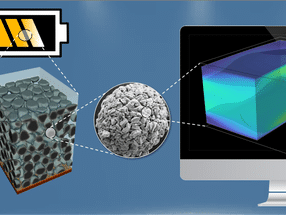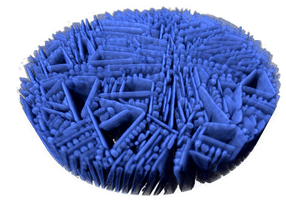Sloan Digital Sky Survey probes Dark Matter Theory
28-May-2003
A new study using the Sloan Digital Sky Survey provides the most direct evidence yet that galaxies reside at the center of giant, dark matter concentrations that may be 50 times larger than the visible galaxy itself.
The study very directly supports the generally accepted astronomical theories on dark matter and contradicts an alternative theory of gravity known as Modified Newtonian Dynamics (MOND).
Lead investigator, Francisco Prada, of the Max Planck Institute for Astronomy in Germany and the Instituto de Astrofisica de Canarias in Spain, and a team of colleagues from New Mexico State University at Las Cruces and at other Sloan Digital Sky Survey (SDSS) institutions, will present the results of the team?s research at a joint conference of the Isaac Newton Group of Telescopes and the Instituto de Astrofisica de Canarias, May 26-30 in La Palma, Canary Islands, Spain.
Prada and his colleagues studied the motion of about 3,000 satellites orbiting isolated bright galaxies and found strong evidence of dark matter gravitational effects.
The study "is important because it is a direct measurement of some of the properties predicted for dark matter," said Anatoly Klypin of New Mexico State University.
Although it cannot be observed directly, dark matter is believed to account for about 27 percent of the total mass of the universe, compared with only about 3 percent for normal, observable matter. The rest, according to standard models of the structure and evolution of the universe, consists of dark energy and radiation.
Prada and his colleagues observed 250,000 galaxies from the Sloan Digital Sky Survey (SDSS) telescope to find good candidates for a study of the gravitational effects of dark matter. From the SDDS data, they identified about 3,000 satellites -- generally small galaxies orbiting large ones ? for which they could measure velocities.
The velocity of a satellite declines predictably as the satellite moves away from the object it is orbiting, due to the effects of gravity. In the case of planets in our solar system, where there is too little dark matter to have a gravitational effect, the decline is rapid because there is no mass between the planets and the sun, he said. But in the outer reaches of galaxies, where dark matter is believed to be clustered, the decline in velocity would be much more gradual if standard cosmological models are correct.
"Our results imply the presence of dark matter," Prada said. The findings provide strong evidence against the MOND alternative theory of gravity, he said. MOND, controversial since it was proposed in 1983, eliminates the need for dark matter in explaining the nature of the universe, by changing the law of gravity in areas such as the outskirts of galaxies.
Researchers said the SDSS study probes dark matter in a way that cannot be done by any other current experiment. This type of research could not have been done without the unique capabilities of the SDSS.
The researchers determined the velocity of each satellite relative to the galaxy it orbits by measuring the redshift in the light spectra from the objects. Redshift, a change in light waves as an object moves away from an observer, is a standard means of measuring the speed of a distant object.
The next stage of the research will be to extend the sample of galaxies and satellites studied to improve the accuracy of the results.
Participating institutions in this discovery are: The Max Planck Institute for Astronomy, Germany; Centro Astronomico Hispano-Aleman; New Mexico State University; Princeton University Observatory; Apache Point Observatory; University of Michigan; Eötvös University, Budapest; and Johns Hopkins University.
Most read news
Other news from the department science

Get the chemical industry in your inbox
From now on, don't miss a thing: Our newsletter for the chemical industry, analytics, lab technology and process engineering brings you up to date every Tuesday and Thursday. The latest industry news, product highlights and innovations - compact and easy to understand in your inbox. Researched by us so you don't have to.



























































